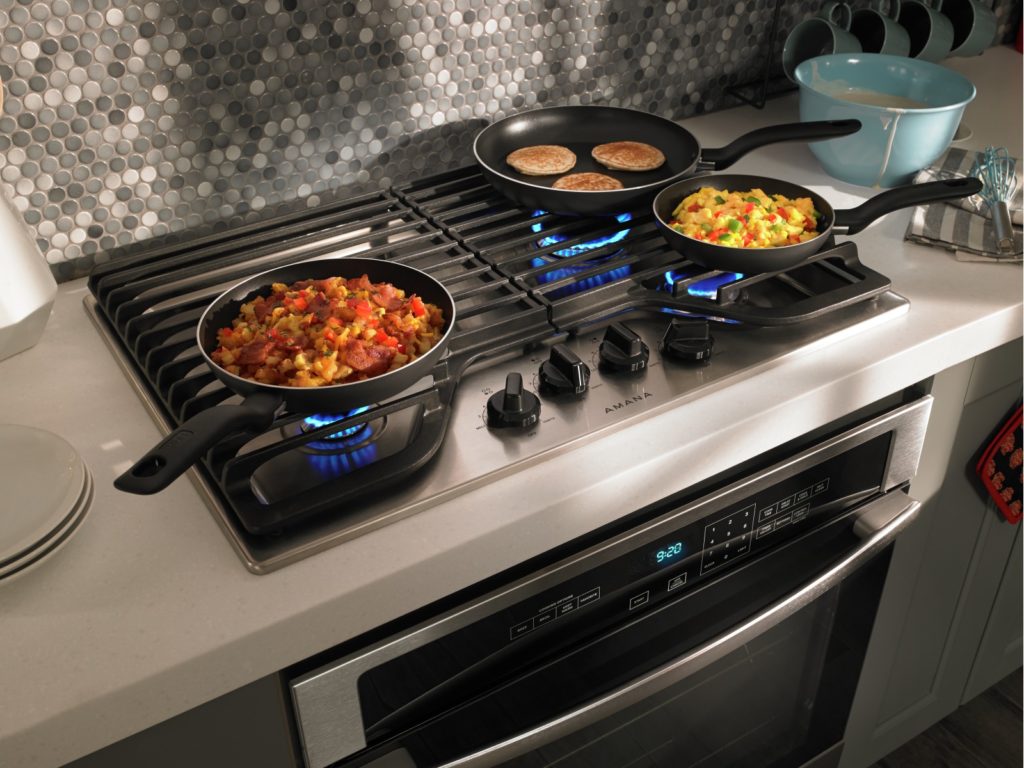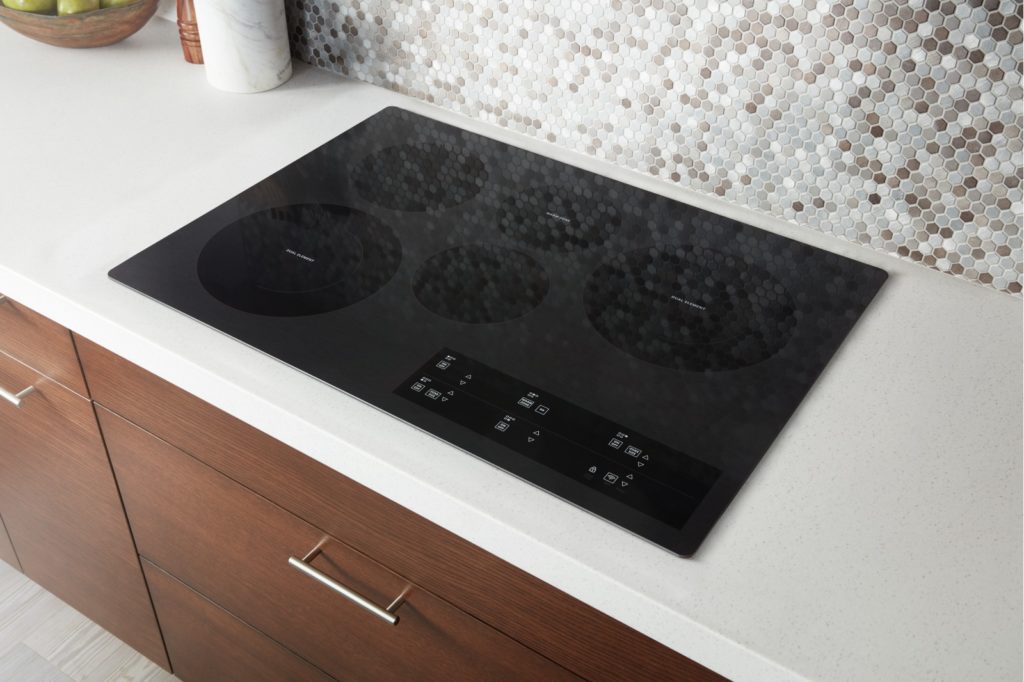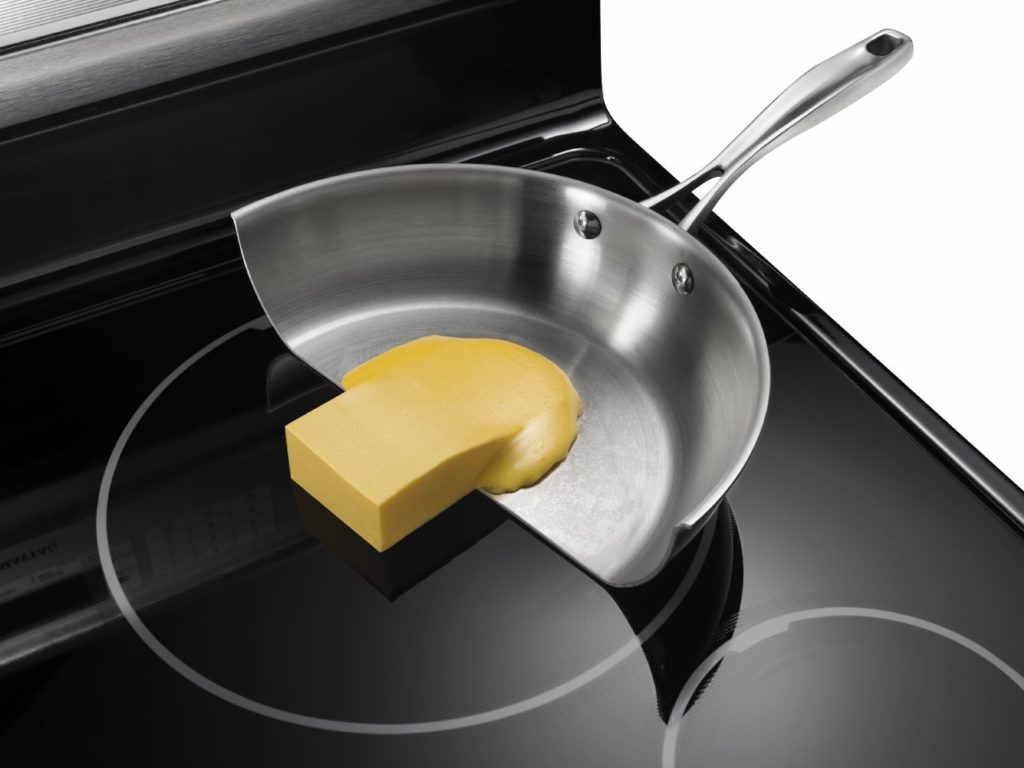
When it comes to cooking, there are three things you need to know about. Gas. Electric. Induction. Those are the three fuel options on the market for your range or cooktop with each having their own benefits and drawbacks. So, how do you know which cooktop fuel type is right for you?
When it comes to fuel, most people tend to go with what they already know, but as technology evolves it’s worth exploring your options. Even beyond innovation, there are plenty of aesthetic reasons to make a change. As you’ll see, not all fuels are created equal.
Now that you’re warmed up, let’s take a look at what you can expect.
Cooking With Gas

Gas cooktops are most popular with serious cooks. From culinary professionals to home cooking wizards, the magic of gas is in that little flame. Compared to electric cooktops, gas offers more precision within a greater temperature range. For many people, the live flame is also more intuitive and easier to control.
Available in natural gas or liquid propane, gas cooktops are more energy-efficient than radiant electric models. From a design point of view the live flame, heavy grates, and commercial appearance remain as popular as ever.
If you like tactile control with a professional look and performance and you aren’t intimidated by a live flame, then a gas cooktop could be for you.
Electric Radiates Warmth

Electric cooktops come in two options; coil top or smooth top. Coil tops are the old-fashioned ones. Rings of conductive metal mounted into the cooktop, and to cook you simply place your pots and pans directly onto the ring. Very durable, easy to clean and self-repair, coil tops are the most affordable cooktops on the market.
Stepping up into a ceramic glass cooktop will offer better performance and more features. With an electric coil, or halogen lamp set beneath the glass, heat is more evenly distributed. The glass top gives you an easy to clean surface and an integrated look that will bring out the best in any kitchen.
If you want an integrated, elegant and relatively inexpensive cooking option, then an electric cooktop could be the way to go.
Why Is Induction Cooking So Attractive?

Induction cooktops may look like electric cooktops, but that’s where the similarity ends. With induction cooktops, magnetic coils are set beneath the glass. When a ferrous metal pot or pan (a magnet will adhere to the pot) is placed on the cooking surface, an electromagnetic field is created which heats the cookware.
Not only is this direct heat incredibly efficient (like boil water in 90 seconds efficient), it’s also the safest and the most precise compared to both electric and gas options. If that wasn’t enough, because the cooking surface doesn’t actually heat up, it’s also the safest and the easiest to clean. When it comes to cooktop performance, induction cooktops really do offer the best of both worlds.
As a newer technology, expect to pay more for induction cooktops. You may also need to invest in new cookware (cookware that will attract a magnet). And when it comes to installation, remember that induction cooktops require anywhere from 40 – 60 amps depending on the model, compared to only 30 – 40 amps for a traditional electric cooktop installation.
If you want the most precise, efficient, and safest option on the market, and you can afford to pay a little bit more for that extra performance, then there has never been a better time to buy a new induction cooktop.
Now that you’ve got a taste of what you’re cooking with, head over to our Appliance Buying Guides for all the information you need on cooktops and ventilation.
Shop our selection of cooktops now!
Isabelle, Your Appliance Expert

